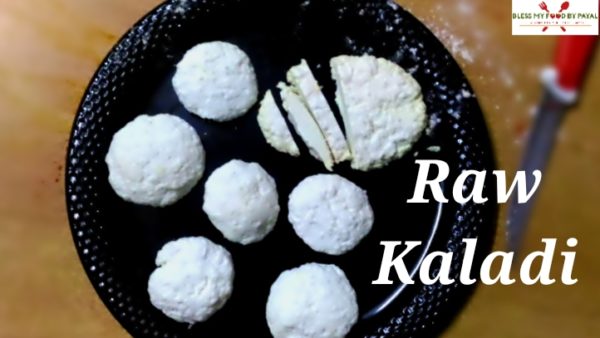
17 Feb kaladi | kalari cheese recipe | famous food of jammu and kashmir
Last Updated on May 11, 2021 by blessmyfoodbypayal
kaladi | kalari cheese recipe | famous food of jammu and kashmir is here with step wise video and pictorial recipe. This is basically a recipe of Kaladi which is Raw.
Kaladi or also spell as Kalari (Maish Krej in Kashmiri language) is an authentic Dogra cuisine originated from the Ramnagar area of Udhampur district of Jammu province of Jammu & Kashmir State & is not available anywhere in the world. Raw Kaladi is now prepared in almost every sweet shop of Jammu on daily basis.
What is Kalari / Kaladi
Usually made from cow’s or buffalo’s milk, kaladi is extremely tasty and legendary food of Jammu, which is not to be mistaken as Mozzarella.
This is a ripened cheese which is a very dense & is usually sauted in its own fats.
Popularity of Kaladi
Visitors who come to Jammu and are aware or being made aware by locals about this street food can’t afford to miss a bite of Kaladi at any cost.
One incident narrated to me long back by my late mother-in-law, is that once some Prime Minister of India (I don’t remember which one) visited Jammu and he was served with Kaladi in the dinner.
He liked it this much that he told his chefs to learn the recipe and on his departure, he got few Kilograms of Kaladis packed and took them away for his family.
I think this is sufficient enough to make you understand how much royal this cuisine is.
HOW TO PRESERVE KALADIS
Simply placing the Kaladis in the refrigerator is sufficient. Don’t put them in any airtight.
And there will be no harm to Kaladis for many days if you leave them out of refrigerator, but during winters only.
TEXTURE & LIFE OF KALADI
- Freshly prepared kaladis have a soft texture but with each passing day, it will keep on hardening. It may turn out to be very hard like mozzarella cheese while being placed in refrigerator & you will feel it hard to cut them with knife even. But being hard is no issue at all and you can still cherish your kaladi.
- It stays good in refrigerator for 12-15 days or even up to 1 month depending upon climate also. It has also a good shelf life during winters but not much in summers.
- Those new to Kaladi may get confused due to its typical smell while keeping it in refrigerator. But let us clear you that it is the natural smell of Kaladi, so don’t consider the Kaladi as rotten. Kaladi has a long life and it becomes non usable only when you find a whitish or greenish fungus over or around it.
- Kaladi made of Buffalo’s or goat’s milk will be white in colour whereas Kaladi made of cow’s milk will have a pale yellow shade. Also some makers make Kaladi out of buttermilk. This kind of Kaladi is not much popular in jammu but is being made in the surrounding vicinity. Such Kaladi is also having pale yellow color.
IN CASE YOU MISS A SHOT
If due to lack of care you forget to switch off the flame at right time and as a result milk boils or for any other reason you missed the shot, then don’t make kaladi out of it.
Because kaladis made up of boiled and cuddled milk may look like kaladi but will taste like cottage cheese/ paneer only.
In such a situation, it is better to make cottage cheese/paneer/chenna as the method of making it is almost similar with a minute difference.
Though you will miss the chance to relish Kaladi for the moment, but atleast there’s a sign of relief that, atleast, your milk has not gone waste. Let it be Paneer this time.
DIFFERENCE BETWEEN KALADI & PANEER/COTTAGE CHEESE
Initially we had no plan to create this heading in this post but later we realised that many of our readers, especially those totally unaware about Kaladi, if thinking that there’s hardly any difference in the making process of Kaladi and Paneer/Cottage Cheese. So what’s new in this recipe?
For those, let us bring few points of difference between the two:-
1. Cottage cheese can be made with any milk, raw or already boiled but Kaladi can only be made of Raw Milk.
2. For making Cottage Cheese, you need to boil the milk, but for Kaladi, only warm the milk. Milk shouldn’t go to boiling stage at all.
3. Cottage Cheese is made by curdling milk with lemon, Vinegar or curd even but Kaladi is made by curdling milk preferably with whey water.
4. There’s no hard and fast rule & a particular stage to add the ingredient into milk for curdling it to make cheese out of it. But in case of Kaladi, you have to warm the milk first, remove it from the flame and only thereafter can add the ingredient you are using to curdle the milk.
5. Either it be Summers or winters, you don’t require to play extra for making Paneer but making Kaladi during winters is somewhat cumbersome job.
6. After milk is curdled for making Cheese, the entire cheena is transferred into muslin cloth to drain the water. However for Kaladi, the round flat balls are made out of cheena and arranged them separately to drain the water.
7. You really don’t need to wait for the last drop to dry up before using Cheese whereas Kaladi tastes best when it is dried completely.
8. The milk solids floating over the top will be creamy when you curdle the milk for making Kaladi. But the texture of milk solids for Paneer is crumbly.
9. If your method of making Kaladi fails, you will get paneer at least. But if your method of making paneer (which almost never) fails, you will not get Kaladi. 🙂
10. There must be 1000 ways to cook/prepare/use Cottage Cheese but Kaladi can only be cooked in 3 ways, as has already been suggested in the post.
11. Lastly, you all must have eaten cheese/paneer many a times. But this time, prepare Kaladi, cook it and feel the difference. Who can guide you better than yourself.
Not only kaladi, but jammu and kashmir is known for many lip smacking recipes and one of them is rajma masala. Also the most magnificent food of Jammu and kashmir is Nadru Yakhni, the recipe of same will also be found in this blog. I hope, you will love to visit these authentic cuisines from the land of jammu and kashmir.
Coming back to the Kaladi, let me tell you that we have developed this recipe on the basis of guidelines sought from the milk vendor Raju, from whom we buy our daily milk.
Step wise pictorial recipe
1. Boil whey water and keep aside.
2. Take a deep pan and add milk in it.
3. Place the pan on gas stove on high flame and warm the milk. You don’t have to boil the milk. We repeat, don’t boil the milk.
(TEST: To ascertain whether the milk is sufficiently warm is to put your finger in the milk. When you can feel the warmth but no trouble in keeping the finger inside milk for atleast 15-20 seconds, it is done.)
4. The moment milk is warm, immediately switch off the flame. Better remove the pan from gas stove.
5. Pour the boiled whey water in milk and start stirring. The temperature of milk will rise as we have added boiling hot whey water in it, so nothing to worry now.
6. After 2-3 minutes of stirring, you will see that the milk will separate from the water. The texture of this milk will be quite creamy.
7. Then take a handful of this separated creamy milk floating over the water on your palm, wisely press it to squeeze the water and give it a shape of tikki. This is your kaladi.
8. Keep making all the kaladis and arrange them at a place where there is a way out to drain the leftover water present in the Kaladi.
(We have used some old bamboo basket already available at our home. You can try other methods like use some wide sieve or inner lid of rice cooker or whatever your imagination allows you to think. The only purpose is to create a space for water to drain out from kaladis).
9. At last when very less floating curdled milk is left in the pan which is not convenient to collect with hands, then pass the liquid through a sieve, hold the collected material within the sieve and make your last Kaladi.
10. Kaladi may take 3 to 4 days in getting dry completely, rather more days during winter. However after couple of hours when Kaladi stops dripping water, you can transfer it in refrigerator.
NOTES
1. You may reduce or enhance the quantity of milk depending upon your need of number of Kaladis.
2. In this recipe, the quantity of whey water is given as 2 cups. However you don’t need to go by measurements strictly. The purpose of whey water is just to curdle the milk. So even if you have less or more whey, you can use it without much calculations. It is, however, important that whey should be of sufficient quantity capable to curdle the milk.
4. Using only whey water is the traditional and appropriate method to curdle the milk for making Kaladi, so preference should be given to this ingredient. But as the whey water is not so much sour, at times (especially during winters) the milk doesn’t curdle inspite of adding liters of whey water. However there’s a rare chance in summers for the milk not to get curdled.
So if you come across same situation and your milk has not been curdled even after waiting for 2-3 minutes after adding whey water, then, while the milk is still little warm, you are suggested to switch over to Optional Ingredients.
Do keep Citric Acid/Taatri or Lemon available with you. Immediately add citric acid/taatri into the milk. Alternatively, you can squeeze one lemon in milk to curdle it.
However avoid using Vinegar (as suggested by our milk vendor).
5. We have mentioned in para 10 & 11 herein above that Kaladi takes about 3 to 4 days in getting dry and only then cook it.
However we would let you know that the shopkeepers who prepare Kaladi start selling immediately after 2-3 hours of making it and they don’t wait for 3-4 days to get it dried. And also Kaladi is being cooked by many even when it is still wet.
We advice you to wait for letting it get dried first. But if you can’t wait for 3 days, then at least give it 8-10 hours to drain whole of its water. Even no harm in drying the Kaladi under the sun for couple of hours, though shopkeepers don’t do like this.
6. Don’t discard the leftover water as it is full of nutrition and proteins. We use this water for kneading the dough which makes the chapatis very soft. This time we made rice in this water. However you can make whey soup too.
7. The size of your kaladi is your personal choice. We made medium to big sized 7 kaladis out of 2 Lts. of milk.
Kaladi – Recipe card
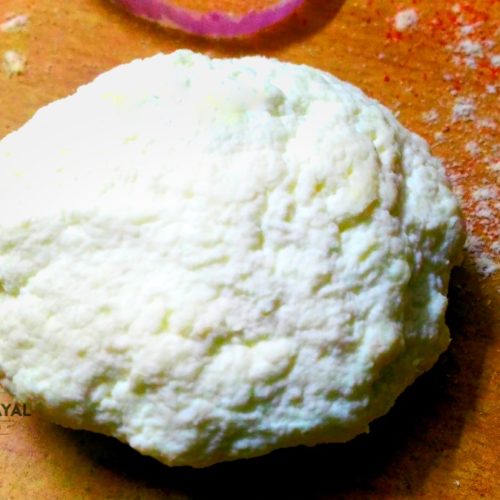
kaladi | kalari cheese recipe | famous food of jammu and kashmir
Ingredients
MAIN INGREDIENTS
- 2 Liters Raw Milk (We have used Buffalo's. You can use Cow's milk also)
- 2 cup Whey Water (Neither too fresh nor too old. Preferably 3-4 days old)
OPTIONAL INGREDIENTS
- (You will find the reasons for mentioning these optional ingredients under the head "Note" in the body of the post. Dear readers are requested not to skip the Notes section, as it carries very vital information regarding preparation of Kaladi)
- 1 tsp Citric Acid / Taatri / nimbu sat OR
- Juice of half Lemon
Instructions
- Boil whey water and keep aside.
- Take a deep pan and add milk in it.
- Place the pan on gas stove on high flame and warm the milk. You don't have to boil the milk. We repeat, don't boil the milk. To ascertain whether the milk is sufficiently warm is to put your finger in the milk. When you can feel the warmth but no trouble in keeping the finger inside milk for atleast 15-20 seconds, it is done.
- The moment milk is warm, immediately switch off the flame. Better remove the pan from gas stove.
- Pour the boiled whey water in milk and start stirring. The temperature of milk will rise as we have added boiling hot whey water in it, so nothing to worry now.
- After 2-3 minutes of stirring, you will see that the milk will separate from the water. The texture of this milk will be quite creamy.
- Then take a handful of this separated creamy milk floating over the water on your palm, wisely press it to squeeze the water and give it a shape of tikki. This is your kaladi.
- Keep making all the kaladis and arrange them at a place where there is a way out to drain the leftover water present in the Kaladi.
- (We have used some old bamboo basket already available at our home. You can try other methods like use some wide sieve or inner lid of rice cooker or whatever your imagination allows you to think. The only purpose is to create a space for water to drain out from kaladis).
- At last when very less floating curdled milk is left in the pan which is not convenient to collect with hands, then pass the liquid through a sieve, hold the collected material within the sieve and make your last Kaladi.
- Kaladi may take 3 to 4 days in getting dry completely, rather more days during winter. However after couple of hours when Kaladi stops dripping water, you can transfer it in refrigerator.
Notes
- You may reduce or enhance the quantity of milk depending upon your need of number of Kaladis.
Once Kaladi is completely dry, make it the following ways:-
A. Kaladi Kulcha
B. Pyaz Wali Kaladi
C. Doodh Wali Kaladi
Feel Free To Ask Queries, If Any…
Regards
PAYAL BALI SHARMA
SHAILENDER SHARMA

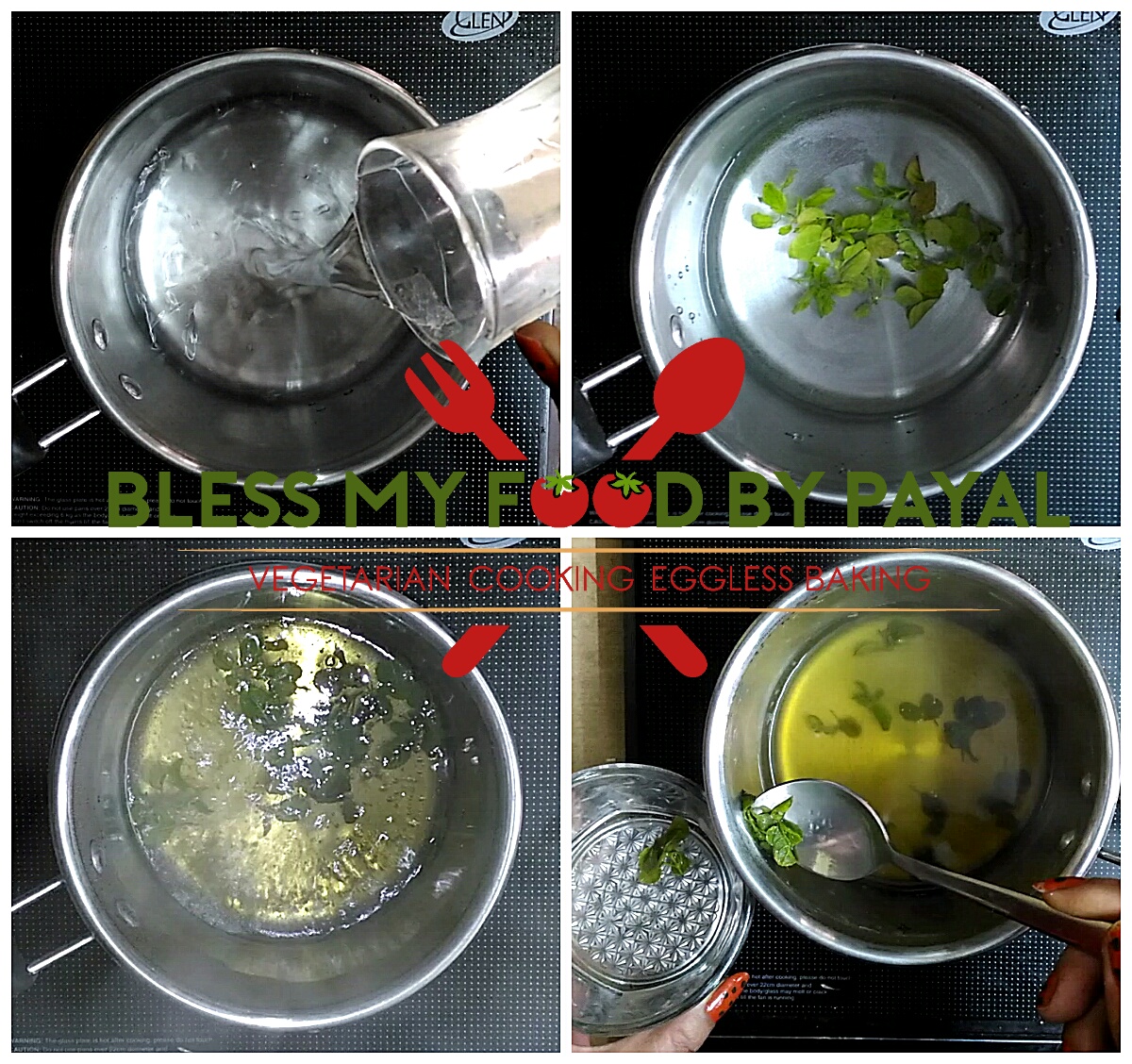
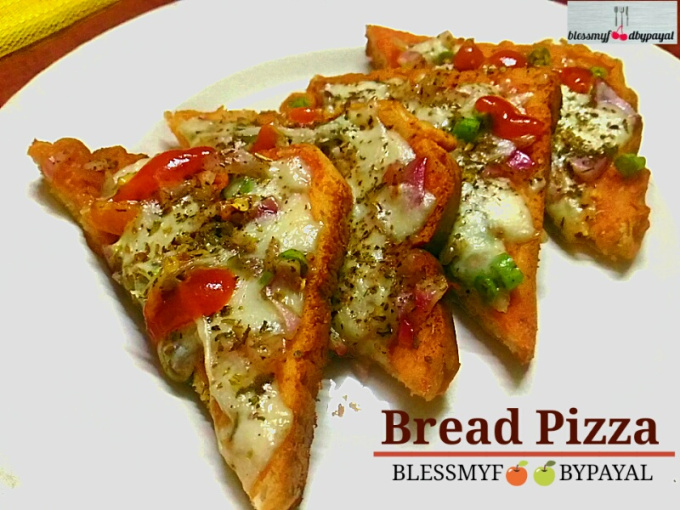
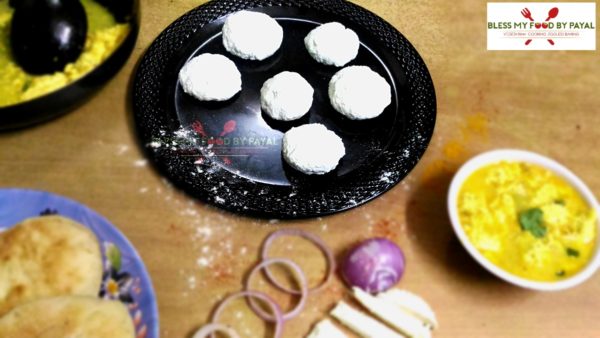
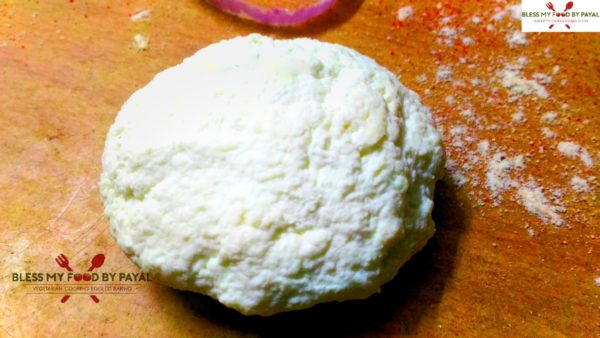
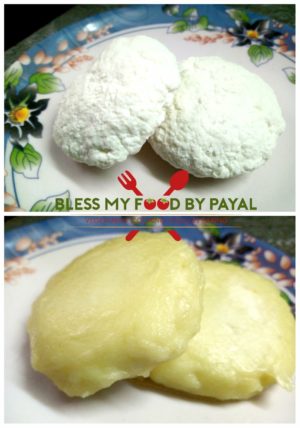
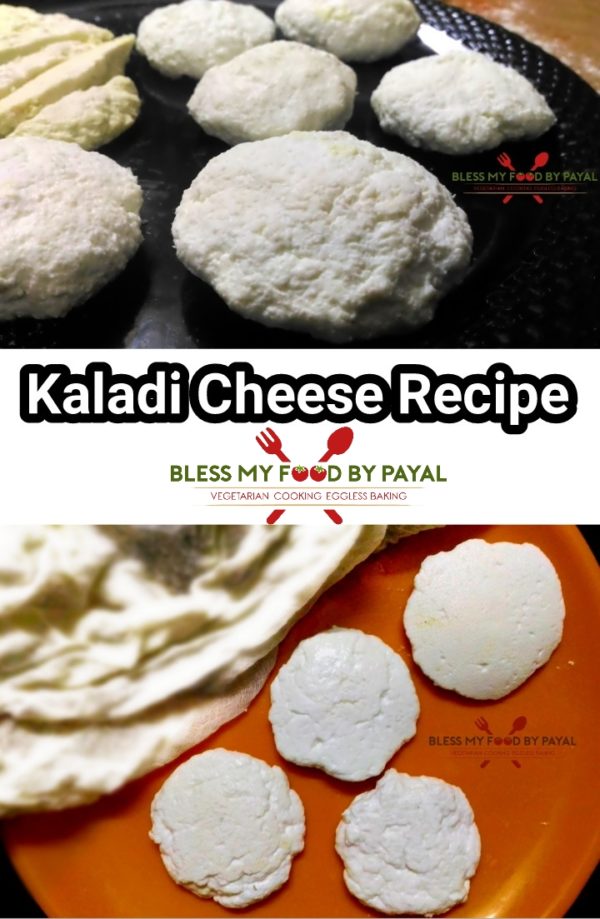
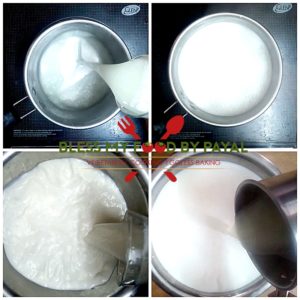
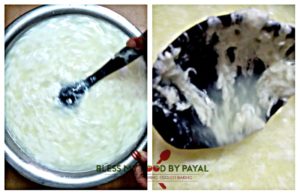
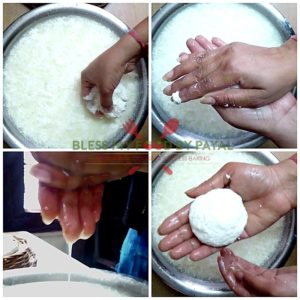
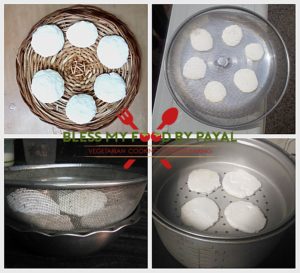
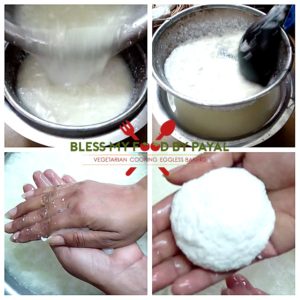
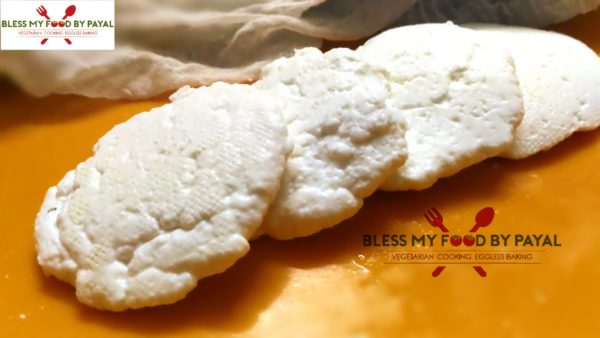
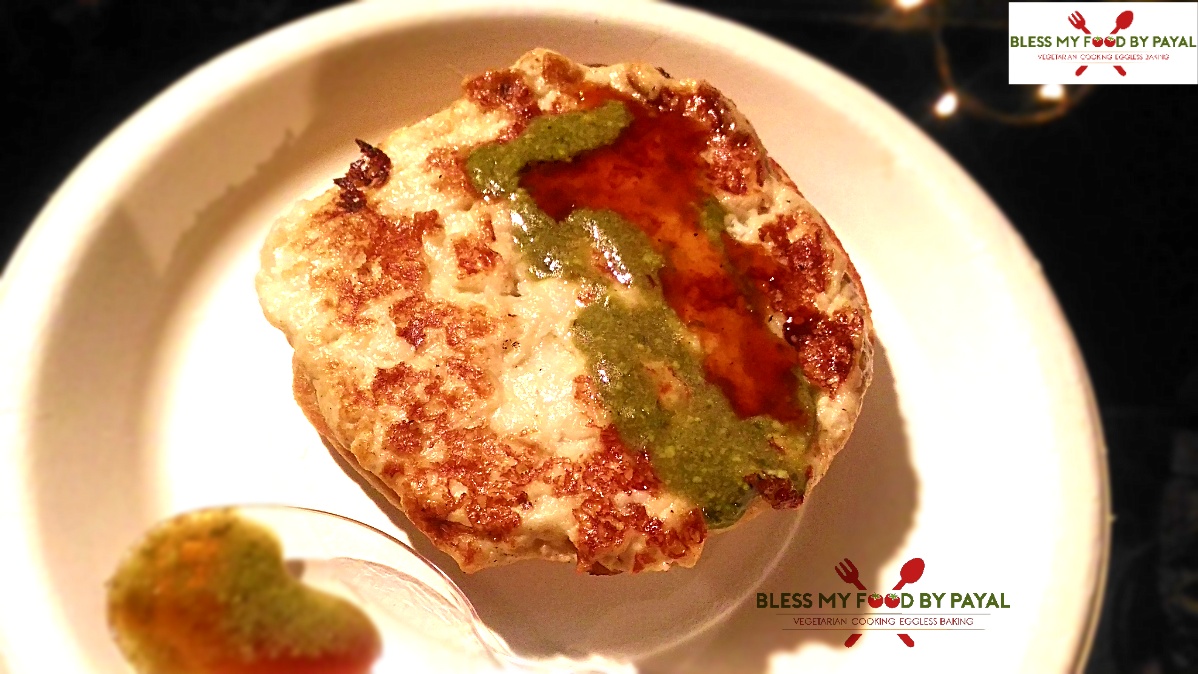
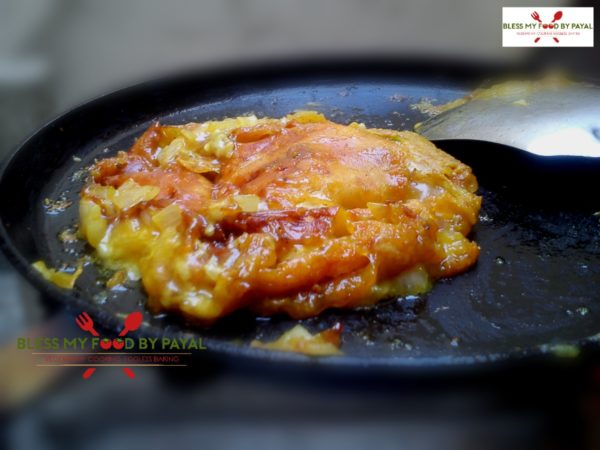
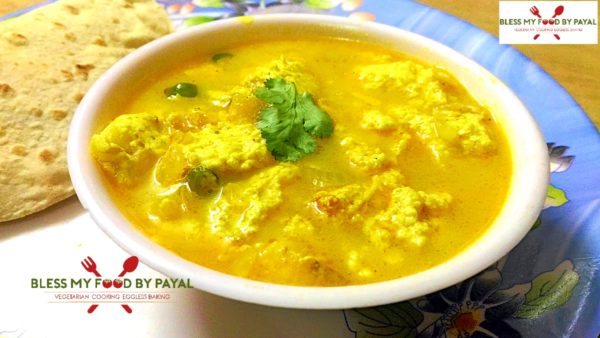
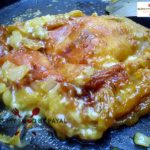
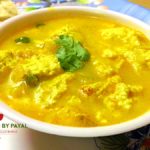
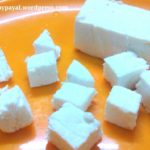
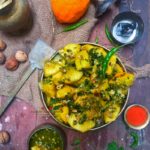
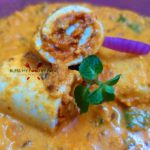
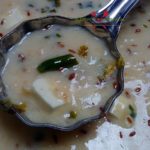
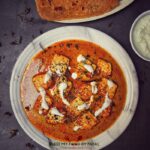
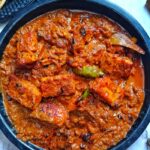
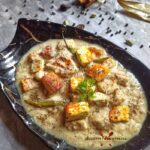
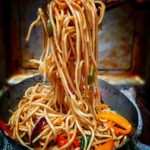
Auyush
Posted at 22:39h, 21 AugustThanks I can’t understand through some of the videos available on the youtube .but u explain it in a very easy way
blessmyfoodbypayal
Posted at 21:15h, 22 AugustYou are most welcome. Thanks for appreciations.
Kulcha (chole wala) recipe | pocket kulcha recipe | street food bakery kulcha recipe - Bless My Food By Payal
Posted at 07:33h, 30 May[…] served with Kaladi, popularly known as Kaladi Kulcha, famous cuisine of […]
Auria recipe | jammu special auria | how to make dogri recipe auria - Bless My Food By Payal
Posted at 18:41h, 30 April[…] take this opportunity to share few of the other traditional recipes of jammu i.e. kaladi, kaladi kulcha, pyaz wali kaladi, Doodh wali kaladi, roadside kulche chole recipe, jammu […]
Jayashree T.Rao
Posted at 14:46h, 11 FebruaryThis is something new to me, but looks like colostrum milk pudding to me. Good to know about these dishes.
blessmyfoodbypayal
Posted at 14:52h, 11 FebruaryThank you
Lathiya
Posted at 20:24h, 10 FebruaryThis is indeed an interesting recipe. Never heard of this before. And thanks for including the recipes that can be made with Kaladi.
blessmyfoodbypayal
Posted at 07:57h, 11 FebruaryThanks a bunch
Anshu
Posted at 05:09h, 07 FebruaryWow! Quite an interesting dish; never heard of it before. Loved the way you have explained everything in such detail including the difference between Kaladi and Paneer…wonderful share!
blessmyfoodbypayal
Posted at 18:03h, 07 FebruaryThanks a bunch
amrita
Posted at 18:45h, 06 FebruaryI have learned about a new type of cheese, kaladi… beautifully explained step by step instructions given so that readers can understand
blessmyfoodbypayal
Posted at 18:48h, 06 FebruaryThanks.
Swati
Posted at 01:16h, 06 FebruaryThis one is a new cheese recipe for me.. never heard of it.. very nicely explained and detailed post, even a person like me who is new to this will be able to make it easily and relish this in different dishes. Wonderful share of a traditional recipe.
blessmyfoodbypayal
Posted at 02:32h, 06 FebruaryYou liked it, gratitude.
Geetha
Posted at 22:06h, 05 FebruaryAlthough I’ve never heard about kaladi, I can imagine how fabulous it must be! Loved reading the detailed post and the difference between paneer and kaladi. Dogra cuisine sounds very interesting!
blessmyfoodbypayal
Posted at 02:31h, 06 FebruaryIndeed it is. Thank you.
NARMADHA
Posted at 11:59h, 05 FebruaryNever heard about kaladi and looks so tempting cheese. Thanks for the detailed step by step instructions and difference between paneer and kaladi. So useful information.
blessmyfoodbypayal
Posted at 17:36h, 05 FebruaryThank you for all appreciations
Mayuri Patel
Posted at 10:18h, 05 FebruarySuch a detailed post on kaladi and very interesting too. I’ve not heard of kaladi but will definitely bear in mind that if ever I’m in Jammu, its something I must try out. How important temperature plays an important part, if the milk gets too hot then it tastes like paneer. Thank you so much for sharing a traditional recipe.
blessmyfoodbypayal
Posted at 17:37h, 05 FebruaryGlad you loved it. Thanks a bunch for each word you wrote.
Sandhya Nadkarni
Posted at 23:41h, 04 FebruaryFabulous post! I have not tasted this cheese yet but can imagine how delicious this must be.
Love your step by step directions
blessmyfoodbypayal
Posted at 02:54h, 05 FebruaryThank you.
Sandhya Ramakrishnan
Posted at 18:08h, 04 FebruaryWhat a beautiful and traditional recipe this is and very new to me. This is a different kind of cheese preparation and just by reading through the steps, I can realize how flavorful this will be. Love the texture of the cheese in your pictures. Thanks foe sharing such a traditional recipe.
blessmyfoodbypayal
Posted at 18:24h, 04 FebruaryYes, no one can say no to it. Thank you
Lata Lala
Posted at 16:08h, 03 FebruaryThis is something new kind of cheese to me and i haven’t heard about this before. I love your traditional recipes as the cuisine is so interesting and it’s such a pleasure to read about traditional recipes.
Keep sharing your wonderful recipes. Looking forward for more.
blessmyfoodbypayal
Posted at 16:10h, 03 FebruaryThank you for finding it interesting.
Pavani
Posted at 00:07h, 31 JanuaryThis is a completely new cheese for me. Thank you for the very detailed instructions on how to make this cheese. It looks absolutely delicious in the recipes you have shared.
blessmyfoodbypayal
Posted at 07:19h, 31 JanuaryThanks a bunch
Nutri kulcha jammu recipe | jammu ke nutri kulche | nutri wala kulcha jammu Street food - Bless My Food By Payal
Posted at 15:24h, 26 January[…] wali chutney, jammu special sund, jammu ke pude, easy gheur recipe of jammu, jammu chocolate, kaladi, kaladi kulcha, pyaz wali kaladi, Doodh wali kaladi, Madra recipe, roadside kulche chole […]
ganth gobi kashmiri style | kashmiri kadam recipe | kashmiri mundi recipe | how to make kohlrabi - Bless My Food By Payal
Posted at 20:56h, 22 December[…] yakhni, ambal, kaladi, roadside kulche […]
Shikha
Posted at 07:18h, 25 JulyI m half dogri …. so i am very much aware of dogra cuisine like madra, ambal,kyur yakhni and kaladi… kaladi is my fav dish wen i visit jammu. Your recipe and way of explainig is very nice.. i have never seen such explained recipe of kaladi.. thanku so much for sharing ur recipe with us.
I have a question rather i shud say a request… have u even been to amritsar. There is a nutri kulcha wala famous there nere DAV college, hathi gate. Plz taste that dish nad m.sure u ll love it. And if possible plz share that reci with us… i tried a lot but cud not not cook nutri with that same taste. Thank again.
blessmyfoodbypayal
Posted at 11:15h, 25 JulyHi Shikha…
Glad to know, you know much about Dogri cuisine & thank you heaps for all your words of appreciation.
Yes, that nutri is in my to do list since long & I will surely try it out. Hope you get it soon in this blog.
Thank you one more time.
Doodh wali kaladi | milk kalari | jammu famous food recipe - Bless My Food By Payal
Posted at 05:37h, 29 April[…] the Kaladi into pieces. Keep […]
pyaz wali kaladi | onion kalari | jammu food recipe - Bless My Food By Payal
Posted at 09:45h, 18 April[…] the Kaladi into […]
Gheur | traditional dogri recipe gheur | easy gheur recipe of jammu - Bless My Food By Payal
Posted at 12:15h, 06 April[…] traditional recipes of jammu and kashmir are kaladi, kaladi kulcha, pyaz wali kaladi, Doodh wali kaladi, nadru yakhni, roadside kulche chole […]
Atma Sharan
Posted at 08:46h, 25 FebruaryThanks for sharing. We got addicted to kaladis during our stay at Udhampur in the early 90s. Have tried taking the recipe many times from the shop keepers but no joy there. Now we shall attempt making at home. Thanks again!
blessmyfoodbypayal
Posted at 18:01h, 25 FebruaryHope you will love it. Thanks for visiting us.
jammu chocolate, jammu chocolate recipe, blessmyfoodbypayal
Posted at 17:39h, 09 November[…] goes to Mr. Raju again, who is our milk vendor and who has already once guided us how to make Kaladi. This time again he guided us at length that how to prepare this […]
Azra Mahrukh
Posted at 19:40h, 07 JulyWill be stretchy and melting upon tossing on hot tawa?
blessmyfoodbypayal
Posted at 11:01h, 10 AugustStretchy and soft, like that of mozzarella.
Anonymous
Posted at 16:38h, 06 MayWow yummy… Never heard of it…. Thanx for sharing
blessmyfoodbypayal
Posted at 16:39h, 06 MayPleasure is all ours… Thanks for dropping by..
furtdsolinopv
Posted at 09:32h, 26 Marchyou may have an excellent weblog here! would you like to make some invite posts on my blog?
blessmyfoodbypayal
Posted at 14:13h, 27 MarchThanks a bunch for appreciating. Can you please mail us the details of your blog?
Our mailing address is given in the contact section.
roadside kulche chole recipe, chana kulcha, jammu street food, no oil chickpeas - Bless My Food By Payal
Posted at 10:22h, 28 February[…] chole recipe, but jammu and kashmir is known for many lip smacking recipes and one of them is kaladi. Being appreciated by former Prime of India and chef Sanjeev Kapoor, this kaladi is made in […]
nadru yakhni, lotus stem recipe kashmir, kashmiri nadru yakhni recipe - Bless My Food By Payal
Posted at 12:04h, 27 February[…] only Nadru Yakhni, but jammu and kashmir is known for many lip smacking recipes and one of them is kaladi. Being appreciated by former Prime of India and chef Sanjeev Kapoor, this kaladi is made in […]
rajma masala, jammu rajma recipe, jammu food - Bless My Food By Payal
Posted at 11:49h, 27 February[…] only rajma, but jammu and kashmir is known for many lip smacking recipes and one of them is kaladi. Being appreciated by former Prime of India and chef Sanjeev Kapoor, this kaladi is made in […]
Jyo
Posted at 08:34h, 18 FebruarySuch an awesome info Payal… Never heard about this….atfirst i thought it was paneer…when i read the differences… i got to know…. nice share dear ✌✌
blessmyfoodbypayal
Posted at 12:23h, 18 FebruaryThis Kaladi is no where made or available in the world….so a new thing to the world. Thanks for appreciating.
Anonymous
Posted at 22:27h, 17 FebruaryGreat post ! Never heard of kaladi, seems to be a delicious cheese !
blessmyfoodbypayal
Posted at 17:01h, 17 FebruaryThis is the most popular Street food of Jammu with outstanding taste.Thanks for your appreciation.
Anonymous
Posted at 16:38h, 17 Februarylooks delicious!
blessmyfoodbypayal
Posted at 16:59h, 17 FebruaryThanks